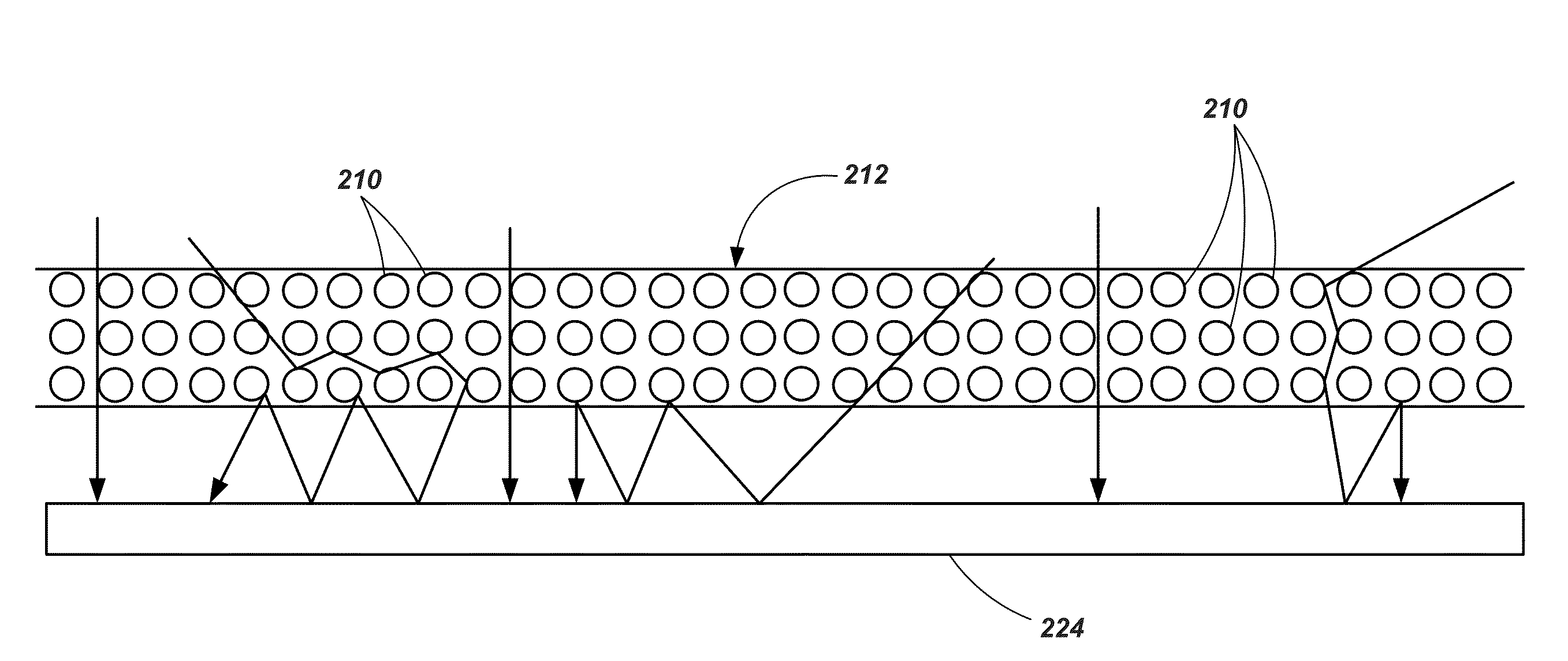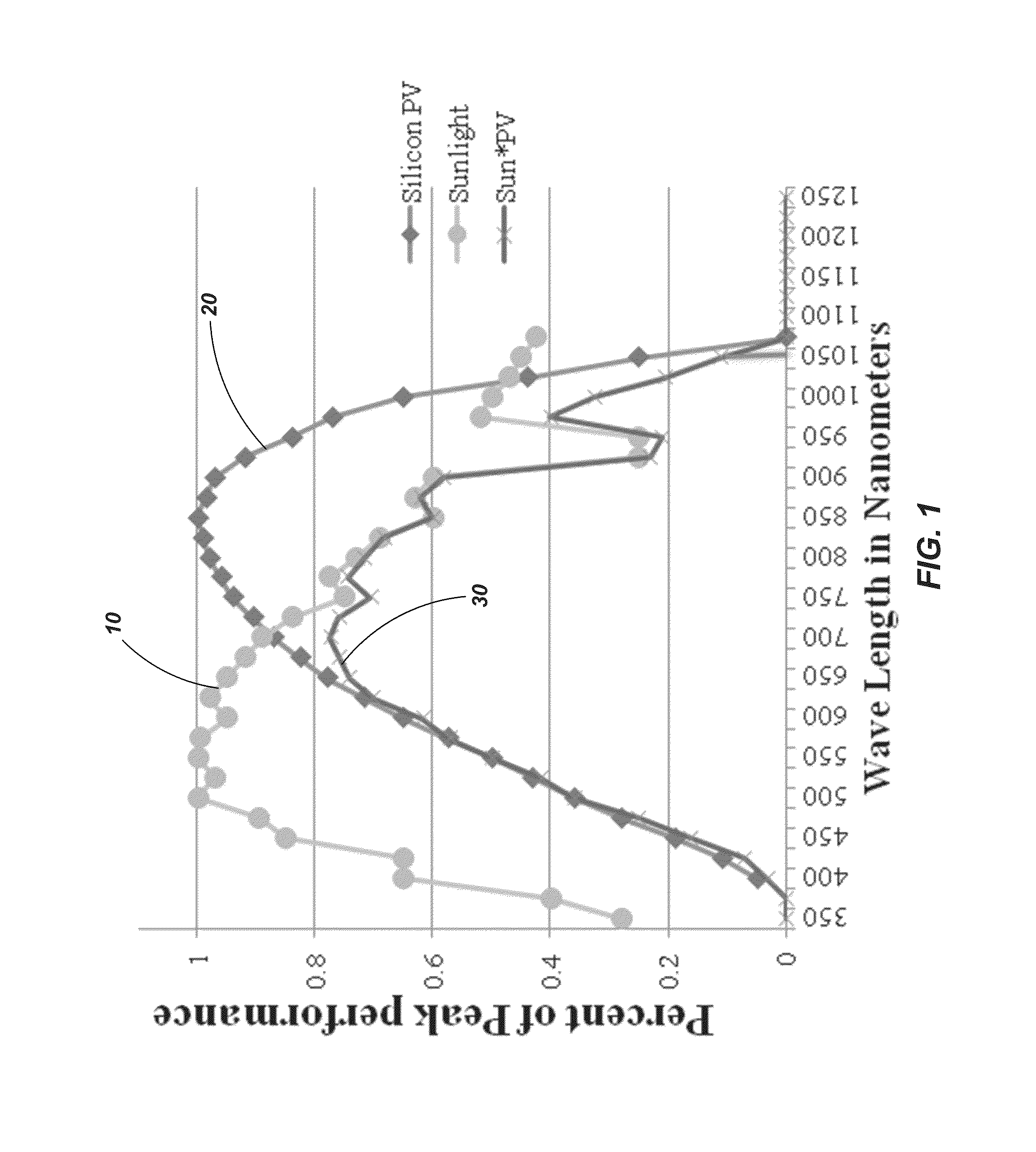Apparatus, systems and methods for collecting and converting solar energy
- Summary
- Abstract
- Description
- Claims
- Application Information
AI Technical Summary
Benefits of technology
Problems solved by technology
Method used
Image
Examples
Embodiment Construction
[0040]Embodiments of the present invention include methods, systems and apparatuses that may incorporate nanoparticles (NPs) as optical enhancements to silicon based and other types of photovoltaic (PV) cells used to capture and / or convert solar energy. As used herein, a NP is a small, discrete object having similar properties as if it were a larger unit of the same material. The small size of NPs is relative. While some authors restrict the definition of a NP to objects which are at most a few hundred nanometers in size, others may consider particles which are as large as 10,000 nanometers as NPs. NPs which are between 1 and 100 nanometers are generally classified as fine NPs. Molecules are not considered to be NPs.
[0041]As described in further detail below, when used in conjunction with PV cells, NPs can enhance the photocell's ability to more efficiently capture and convert more of the available photonic energy into electrical energy. Various embodiments described herein may util...
PUM
 Login to View More
Login to View More Abstract
Description
Claims
Application Information
 Login to View More
Login to View More - R&D
- Intellectual Property
- Life Sciences
- Materials
- Tech Scout
- Unparalleled Data Quality
- Higher Quality Content
- 60% Fewer Hallucinations
Browse by: Latest US Patents, China's latest patents, Technical Efficacy Thesaurus, Application Domain, Technology Topic, Popular Technical Reports.
© 2025 PatSnap. All rights reserved.Legal|Privacy policy|Modern Slavery Act Transparency Statement|Sitemap|About US| Contact US: help@patsnap.com



